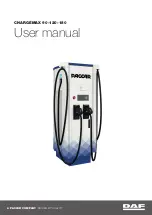
Inspection
All parts of the seat belts, including the belt fabric, should be
regularly inspected for fraying, loosening, wear and other damage.
Keep the belts in good condition at all times to reduce the chance of
being injured in an accident, and to minimize any injuries that do
occur. Make sure the buckles, retractors, tongue plates, guides and
anchors all work properly.
Don't let anything get inside the buckle or the retractor; it could
cause latch or retractor failure.
The components of the front automatic lap/shoulder belts are
contained in the doors. If the doors are damaged in an accident,
have the dealer check the restraint system's function. The
automatic lap/shoulder belts may not function properly if the door is
not completely repaired.
Cleaning
The belts should be always kept clean and dry; wet or damp belts
can cause rewinding problems. The front seat belts are coated for
resistance to water and stains. To clean the belts, pull them all the
way out of their retractors and use warm water; then let them air-
dry fully extended, in the shade, with the car windows open. Do not
scrub or use detergents to clean the seat belts.
Never bleach, dye or clean the belts with chemical solvents; it
will weaken the fabric.
Do not remove the seat belts from the car to wash them.
Replacement
Replace the seat belt if:
1. The belting is cut, punctured, burned, etc.
2. The buckle or retractor does not work properly.
3. It was being worn at the time of a collision (also cheek for
deformation damage at all seat belt anchor points).
4. Its condition is questionable.
Main Menu
▼
▲
















































